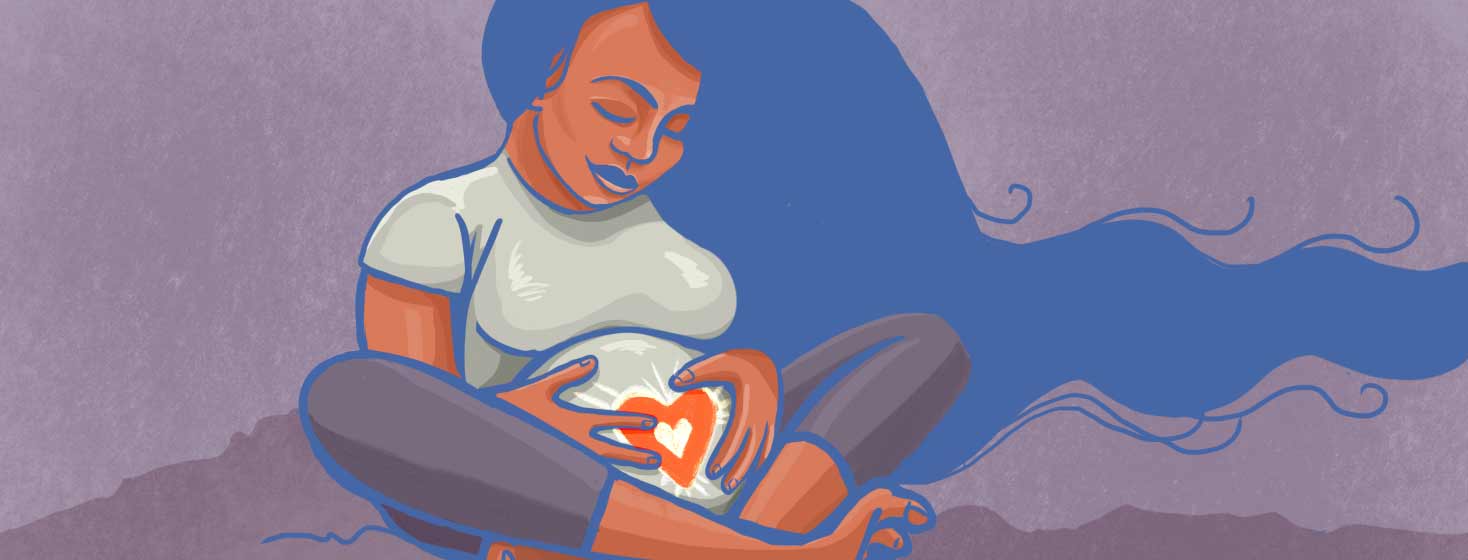Here's How Your Heart Develops
Your heart starts to develop shortly after birth. Just three weeks after fertilization, it is fully formed, and within 21-22 days after fertilization, your heart starts beating. This makes your heart the first fully functioning organ which shows how important it is for moving blood throughout your body.1-2
Early development
The fetal heart looks and works in a “primitive” fashion compared to the heart that is formed by the time you are born. For instance, the initial flow of blood is from the tail of the embryo to the head. The heart continues to rapidly develop and around 23-28 days the heart starts looking like an adult heart.1-2
By five weeks, the heart is almost fully developed. It has a left atrium and left ventricle, which form the left side of your heart. It also has a right atrium and right ventricle, which form the right side of the heart.1-2
There is one thing that makes the fetal heart different from an adult heart: the fetal heart has an opening between the right atria and left atria. This opening is called the ductus arteriosis. As I will describe in the paragraphs below, this opening will play a function in the flow of blood through the fetal heart.3-4
How does blood flow through the fetal heart?
Gas exchange in the womb
Fetal lungs do not participate in gas exchange. This means they do not transfer oxygen from your lungs to your blood nor do they transfer carbon dioxide (CO2) from your blood to your lungs for you to exhale. In other words, fetal lungs do not receive oxygen from inhaled air. Because of this, blood vessels inside their little lungs remain constricted. This makes their lungs stiff and it's there difficult for their heart to pump blood through them. Along with the ductus arteriosis, this too plays a role in how blood flows through the fetal heart.3
An interesting path
So, the mother inhales fresh oxygen. It travels to her lungs, through her arteries, and into her placenta. From the placenta, the umbilical vein transports oxygen into the fetal veins. This oxygenated blood flows to the child’s right atria. From there it takes an interesting path. Since the blood vessels in the lungs are constricted, the lungs themselves are stiff. So, instead of moving in this direction, blood is shunted from the right atria through the ductus arteriosis and into the left ventricle. Only a little bit of blood travels to the right ventricle and into the lungs.3
The role of the placenta
Now you have oxygenated blood in the left atrium. This blood then flows to the left ventricle. As it would in the adult heart, the left ventricle pumps oxygenated blood to all the cells of your body. So, what happens to fetal CO2? Well, it travels the opposite path as oxygen to the placenta and is then exhaled by the mom. Essentially, the placenta is responsible for gas exchange in the fetus rather than the lungs.3
What happens at birth?
At birth, some amazing things happen. First, the infant takes in that first breath. Oxygen rushes into the lungs. After a few breaths, this fresh oxygen causes blood vessels inside the infant's lungs to relax. Since the lungs are now relaxed, this changes the flow of blood through the heart. Rather than flowing through the ductus arteriosis, blood in the right atrium takes the new path of least resistance: the left ventricle and then the lungs.3
This is when the lungs take over the all-important role of gas exchange. The newborn inhales and draws oxygen and exhales and blows off CO2. This will continue for the duration of the child’s life.
Over time, the ductus arteriosis closes up. Although, in a few rare instances, the ductus arteriosis remains patent. This creates a congenital (birth) heart defect called a Patent Ductus Arteriosis. I discuss this in more detail in my post “Congenital Heart Disease.”4
Do you have a heart failure story? Click the button below to share with our community!

Join the conversation